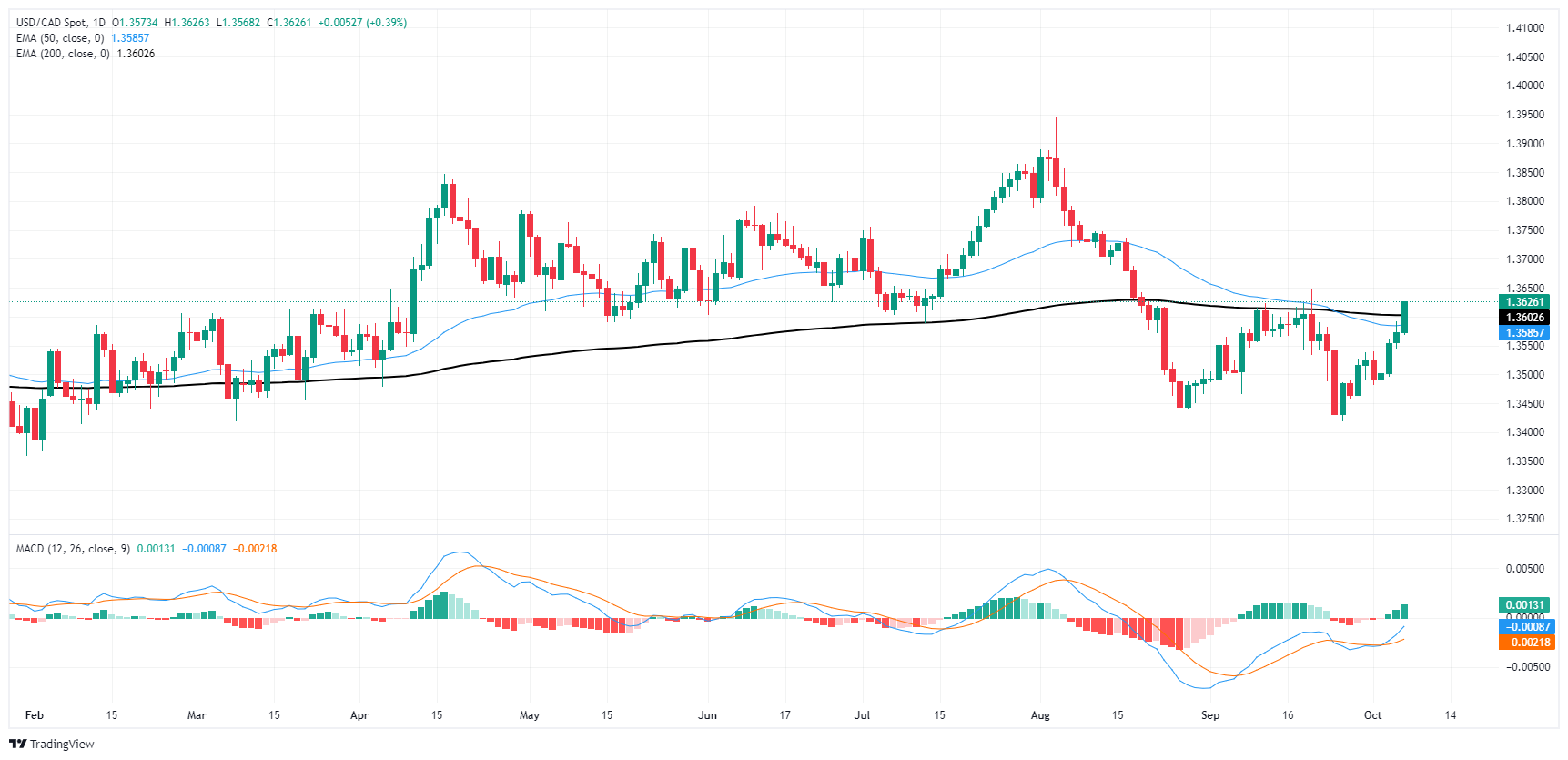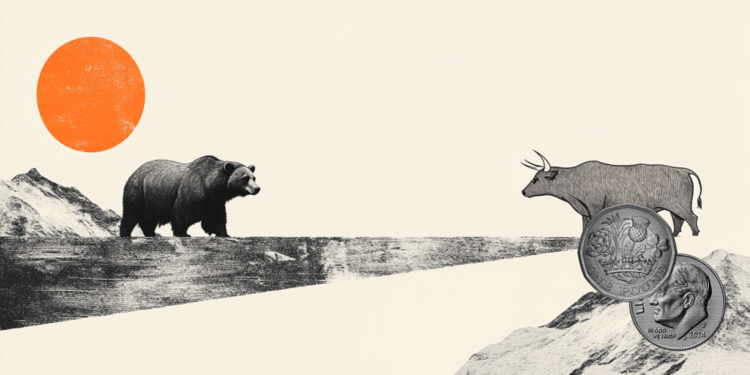- The Canadian Dollar continues to lose ground against the Dollar.
- Markets have adopted a risk-off stance to start the new week.
- Canada remains largely absent from the economic calendar until Friday.
The Canadian Dollar (CAD) retreated towards long-term averages against the US Dollar on Monday, with markets opening the new trading week remarkably expectant. Investors retreated to the safety of the dollar, sending the Canadian dollar to three-week lows.
Significant economic data from Canada is completely absent from the economic data calendar this week, at least until the release of new Canadian jobs data, scheduled for Friday. Canadian trade balance figures will be released on Tuesday, but will almost certainly have little to no impact on the market.
Market drivers
- Rising risk aversion sentiment hits CAD on Monday.
- Markets face a lower forecast for the pace of rate cuts than many expected at the beginning of the year.
- The chances of further large rate cuts by the Fed are fading as the US labor market remains stubbornly healthy.
- The Fed remains lukewarm on further rate cuts, and bets are rising that there will be no change in November.
- Fed: Risk balance has shifted towards higher unemployment – Neel Kashkari
Canadian Dollar Price Forecast
USD/CAD is currently trading at 1.36245, having recently bounced from the 1.3500 level. Notably, the price action has moved above the 200-day exponential moving average (EMA), a critical level that often signals a change in trend direction when broken. The break above this longer-term EMA suggests that bullish momentum could be gaining traction, and this level could act as a new support zone.
Furthermore, the 50-day EMA is slightly below the current price, further reinforcing the bullish outlook. The crossover above both the 50 and 200 day EMAs in quick succession strengthens the case for a possible rally in the coming days, assuming a significant pullback does not occur.
The MACD histogram also indicates a bullish change, as the MACD line (blue) has crossed above the signal line (orange), suggesting an increase in bullish momentum. This crossover, along with a steadily rising histogram, points to a possible continuation of the upward move.
However, it is important to note that the pair is approaching resistance near the 1.3650 level, which has previously acted as a strong psychological and technical barrier. If USD/CAD manages to break and hold above this level, it could open the door to further gains, with the next key resistance zone around 1.3800.
USD/CAD Daily Chart
The Canadian Dollar FAQs
The key factors that determine the price of the Canadian Dollar (CAD) are the level of interest rates set by the Bank of Canada (BoC), the price of oil, Canada’s main export product, the health of its economy, inflation and the trade balance, which is the difference between the value of Canadian exports and its imports. Other factors are market confidence, that is, whether investors bet on riskier assets (risk-on) or look for safe assets (risk-off), with the risk-on being positive for the CAD. As its largest trading partner, the health of the US economy is also a key factor influencing the Canadian dollar.
The Bank of Canada (BoC) exerts significant influence over the Canadian Dollar by setting the level of interest rates that banks can lend to each other. This influences the level of interest rates for everyone. The BoC’s main objective is to keep inflation between 1% and 3% by adjusting interest rates up or down. Relatively high interest rates are usually positive for the CAD. The Bank of Canada can also use quantitative easing and tightening to influence credit conditions, with the former being negative for the CAD and the latter being positive for the CAD.
The price of oil is a key factor influencing the value of the Canadian Dollar. Oil is Canada’s largest export, so the price of oil tends to have an immediate impact on the value of the CAD. Generally, if the price of oil rises, the CAD also rises, as aggregate demand for the currency increases. The opposite occurs if the price of oil falls. Higher oil prices also tend to lead to a higher probability of a positive trade balance, which also supports the CAD.
Although inflation has traditionally always been considered a negative factor for a currency, as it reduces the value of money, the opposite has actually happened in modern times, with the relaxation of cross-border capital controls. Higher inflation often leads central banks to raise interest rates, attracting more capital inflows from global investors looking for a lucrative place to store their money. This increases the demand for the local currency, which in the case of Canada is the Canadian Dollar.
The published macroeconomic data measures the health of the economy and may have an impact on the Canadian dollar. Indicators such as GDP, manufacturing and services PMIs, employment and consumer confidence surveys can influence the direction of the CAD. A strong economy is good for the Canadian dollar. Not only does it attract more foreign investment, but it may encourage the Bank of Canada to raise interest rates, resulting in a stronger currency. However, if economic data is weak, the CAD is likely to fall.
Source: Fx Street
I am Joshua Winder, a senior-level journalist and editor at World Stock Market. I specialize in covering news related to the stock market and economic trends. With more than 8 years of experience in this field, I have become an expert in financial reporting.







